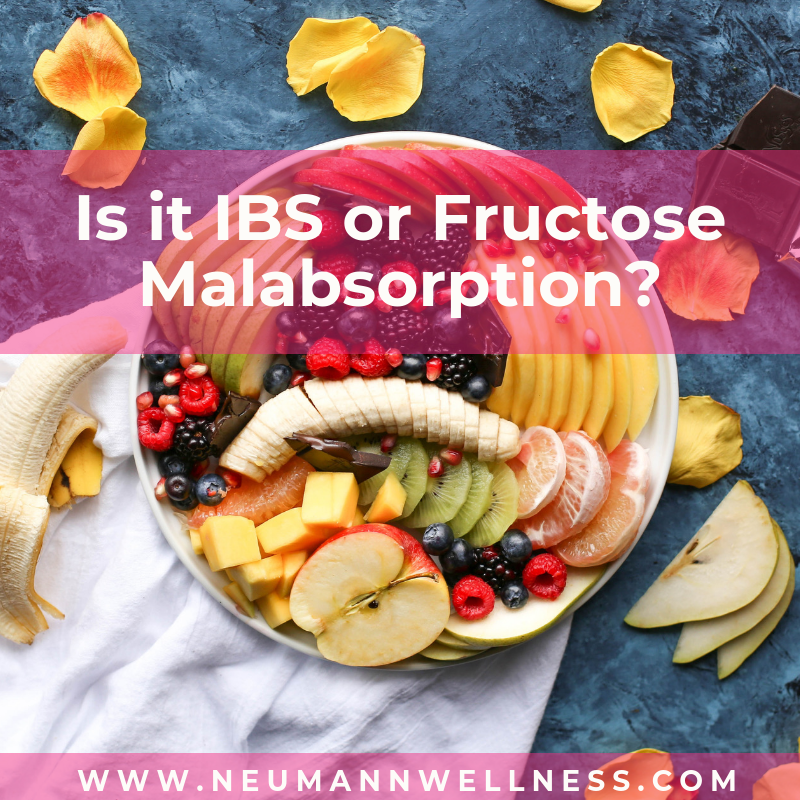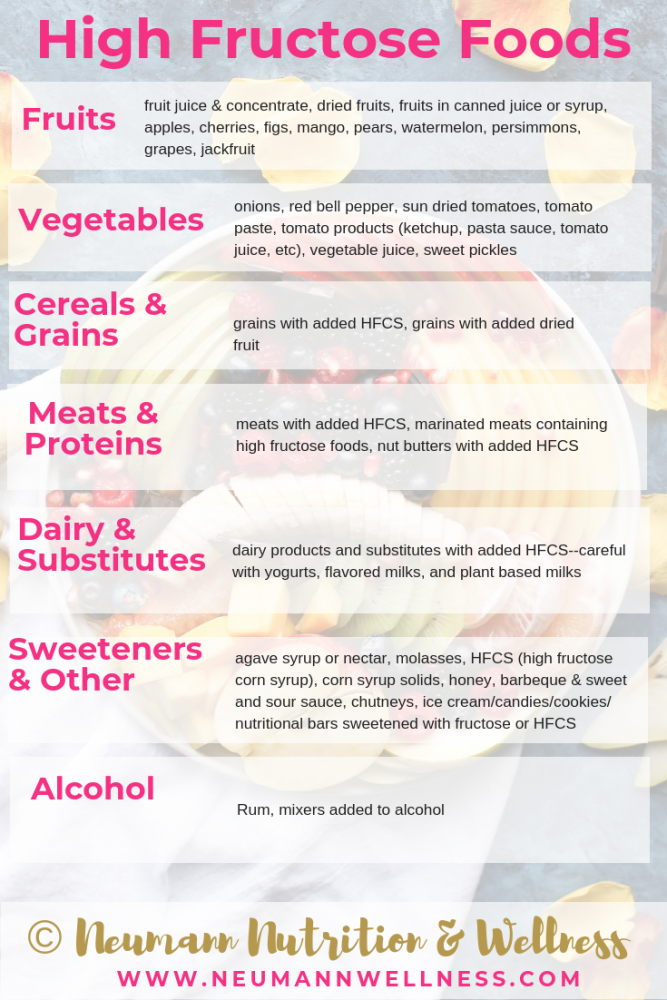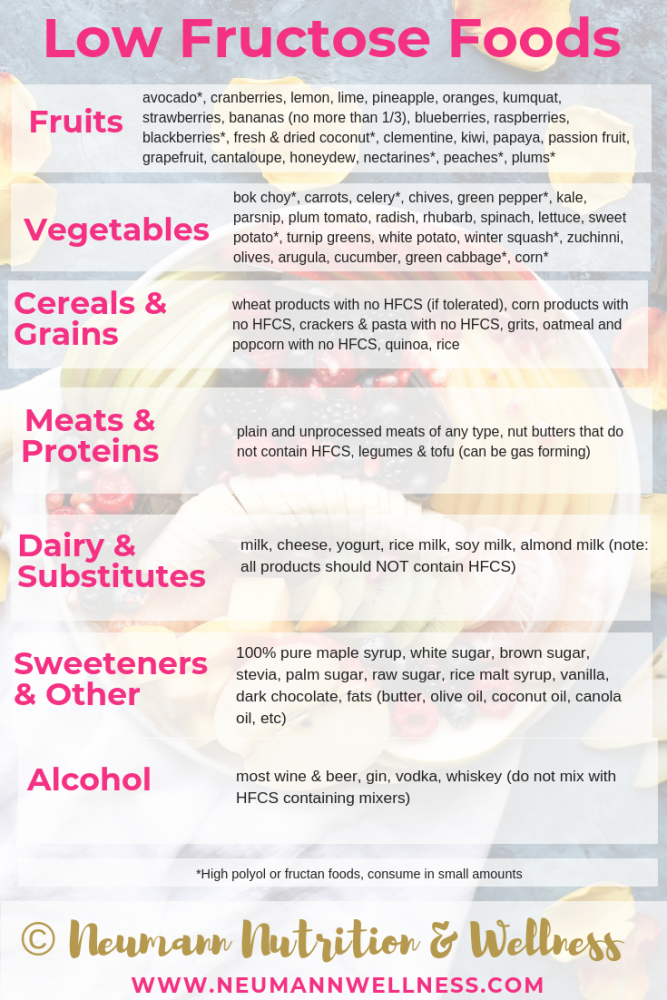
Is Your Stomach Plotting Against You? Here’s What You Need to Know About Fructose Malabsorption
Let’s talk about that bloated, crampy, gas-filled, “why does my stomach hate me?” feeling that never seems to end. If that’s your reality, there’s a chance it could be Fructose Malabsorption throwing your gut for a loop, and not just the usual Irritable Bowel Syndrome (IBS) drama.
Fructose Malabsorption and IBS often share the same symptoms, which makes it tricky to figure out what’s really going on. But how can you tell which one is the real problem?
It’s simple, you can get yourself a hydrogen or methane breath test. It’s like a gut detective, zeroing in on the un-absorbed fructose causing chaos in your digestive system. Think of this test as the missing piece to the puzzle of your gut problems. As a bonus, I can help you interpret those results as part of my comprehensive 12 week Digestive Reset Program.
If you can’t do the breath test, you can still give your gut a break by cutting out fructose for a while and seeing if your symptoms ease up.
What Foods Are Secretly Loaded With Fructose?
Fructose is hiding in more places than you’d think. It’s a monosaccharide (a fancy word for a simple sugar) and it comes in three forms in your diet: free fructose (found in fruits and honey), part of sucrose (aka regular sugar), and as fructans (a chain of fructose molecules) and in some veggies and wheat.
The biggest instigator? High Fructose Corn Syrup (HFCS)—and it’s in way more foods than you’d expect. Here’s a list to get you started:
- Soft drinks (they’re bad for you on so many levels)
- Ketchup & condiments (who would’ve thought!)
- Jams & jellies
- Yogurt & flavored milks (not as innocent as you think)
- Commercial breads (those store-bought loaves are sugar-loaded)
- Commercial salad dressings
- Cereals & breakfast foods (they’re basically sugar bombs)
- Crackers
- Maple syrup (unless it’s 100% pure, it’s got fructose in it)
So if you’re wondering why your stomach keeps acting up, take a closer look at your diet. Fructose is hiding in more foods than you might’ve thought.
How is Fructose Absorbed?
Your body can only handle so much fructose before it taps out. And right now we’re drowning in it. Fructose intake has tripled since the early 1900s—mostly thanks to all the added fructose in processed foods. Your gut has got a lot more to deal with than it ever did before.
When most people think of fructose, they think of fruit. Apples and oranges aren’t causing your troubles. A huge chunk of your daily fructose comes from foods you wouldn’t expect, like sodas, sauces, and snacks as mentioned above.
How exactly does your body break down fructose? For every fructose molecule that needs to be absorbed, it needs a glucose molecule. If that glucose isn’t around to pair up with it, that fructose just hangs out in your gut, causing problems.
That’s why sucrose (regular table sugar) tends to be easier to digest. It’s half glucose, half fructose, so your body has what it needs to handle it without issues.
Now, when it comes to fruit, some are easier on your stomach than others. Berries, citrus, and melons have more glucose than fructose, so they’re usually not a problem in smaller amounts.
And lastly, if you’re eating sugar alcohols—things like sorbitol, mannitol, or xylitol—you’re throwing a wrench into the works. These sugar substitutes mess with fructose absorption, and can leave your gut feeling like it’s been put through the wringer.
Your body has limits when it comes to fructose, and understanding how it all works (or doesn’t) is your ticket to a happier gut. Keep your eyes open to stop letting that excess fructose sneak up on you.
What Foods Should You Cut and What Should You Keep?
Alright, here’s how you tackle this whole fructose situation. First thing’s first: cut out the added fructose. That means anything with ingredients like fructose, crystalline fructose, HFCS (High Fructose Corn Syrup), corn syrup solids, agave, and honey needs to go. Yes, even honey—it’s not your gut’s BFF when it comes to fructose overload.
And don’t even think about those sugar-free products. They’re often loaded with sorbitol or xylitol, which will make things worse.
A fun fact: 1 can of soda has the same amount of fructose as 2 apples or 2 ounces of honey. So, if you’re thinking a soda’s no biggie, think again.
Also, keep an eye on medications or supplements that sneak fructose into their ingredient list. Not all fructose is obvious, and some of it might be hiding in places you wouldn’t expect.
Now, you might’ve heard that adding glucose (dextrose) to fructose-heavy foods can help your body absorb it better. Spoiler: research doesn’t back this up. Adding more sugar to sugar might seem like a quick fix, but it’ll probably just make things worse in the long run.
When it comes to fruits vs. veggies, fruits are the heavy hitters in the fructose department. A standard serving of fruit is 1/2 cup, and you’ll want to keep that to 2 servings a day max—but go for lower-fructose fruits. Think berries, citrus, and melons.
Veggies, on the other hand, are usually much easier on your gut. A serving is 1/2 cup, or 1 cup of leafy greens, and you can aim for 3-5 servings a day as tolerated.
Your gut’s the boss here. Listen to it, and keep your fructose intake in check.
A Quick List of High & Low Fructose Foods


A Few More Tips Before You Go
Once you start your low-fructose diet, it’s important to stay on top of your progress. That’s where Practice Better comes in. As part of my 12-Week Digestive Reset Program, you’ll have access to this powerful tool to track your symptoms, meals, and any changes along the way. It’ll help you stay accountable and fine-tune your approach so your gut feels its best.
Still not sure about the fructose content of a specific food? No worries! You can easily check the USDA database by typing “fructose” and the food’s name into the search bar. Stick to foods that have less than 5g of fructose per serving to keep your gut on track: USDA Database
And remember, your tolerance to fructose depends on how much you’re eating at once. It’s also important to consider polyols and fructans if you’re still feeling off.
Here’s the Best Part: I’ve Got Your Back in Finding Your Way to True Vitality
No more guessing games, no more randomly eliminating foods and hoping for a miracle.
I’m here to help you design a clear, customized path to wellness that’s built specifically for your body. We’ll pinpoint the exact foods causing your gut issues, then work together to create a plan that heals and restores balance. This isn’t a one-size-fits-all approach—it’s a solution tailored to you.
Ready to uncover the true cause of your gut inflammation and start your transformational gut healing journey? My program is custom-built and reserved only for those who’re ready to go all in. Schedule your digestive assessment with me to get started.

